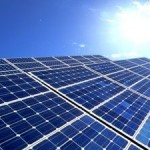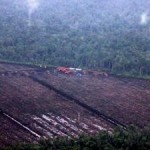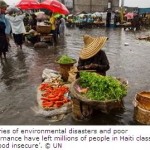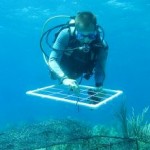 Kuwait City / Washington D.C. – Kuwait has officially joined the World Bank-led Global Gas Flaring Reduction (GGFR) partnership in an effort to further reduce emissions from the burning of natural gas associated with oil production in the Middle East, and exploit the maximum potential from this valuable energy resource.
Kuwait City / Washington D.C. – Kuwait has officially joined the World Bank-led Global Gas Flaring Reduction (GGFR) partnership in an effort to further reduce emissions from the burning of natural gas associated with oil production in the Middle East, and exploit the maximum potential from this valuable energy resource.
Kuwait, represented in the partnership by Kuwait Oil Company Ltd. (KOC), a subsidiary of the Kuwait Petroleum Corporation, has reduced flaring from 17% down to 1.75% of its gas production during 2005-06 and 2010-11 respectively. This reduction has increased revenues by $ 2.7 billion, KOC executives said. Reduced gas flaring also resulted in lesser consumption of liquid fuels and reduction in LNG import volumes. By cooperating with GGFR, KOC expects to reduce flaring to less than one percent of associated gas production at the earliest possible.
“Gas flaring reduction is a vital contribution to reducing greenhouse gas emissions, improving energy efficiency and mitigating climate change,” says S. Vijay Iyer, Director of the World Bank’s Sustainable Energy Department. “We welcome Kuwait into this partnership and look forward to achieving with them further flaring reductions, building on the impressive results already achieved by KOC.”
Kuwait is the third country in the Middle East to join the GGFR initiative, following Iraq and Qatar. The GGFR, a public-private initiative of some 30 major oil-producing countries and companies, aims to overcome the challenges for the utilization of associated gas, including lack of regulations and markets for associated gas utilization. GGFR partners’ main objective is to reduce the environmental impact of gas flaring, as well as the waste of a valuable energy source.
Global gas flaring, estimated in 2010 at 134 billion cubic meters (bcm), not only wastes gas energy, but also accounts for about 360 million tons of greenhouse gas emissions. Recent satellite data show that 30 bcm were flared in the Middle East in 2010, which amounts to 75 million tons of carbon dioxide – roughly equivalent to the annual emissions of 15 million cars.
As Kuwait joins this partnership, GGFR is poised to move into an exciting new phase for accelerating gas flaring reductions and utilizing the gas thus saved for development. Kuwait Oil Company, at its current flaring level of about 1.5% of its gas production, is reckoned to be one of lowest flaring oil companies.
“Kuwait Oil Company’s phenomenal achievements in Gas Flaring reduction were initially driven by environmental concerns, but it soon became evident that millions of dollars in savings could be accessed by reducing a huge amount of waste of scarce gas resources,” says Sami Al-Rushaid, C&MD, Kuwait Oil Company. “These results were driven by the dedicated and well-coordinated efforts of various departments across the company.”
As per GGFR’s latest satellite estimates for 2010, Kuwait flares some 1.2 billion cubic meters (bcm) every year (of which KOC constitutes only a small fraction). After extraction of value-added products (Ethane, LPG, etc) from associated gas, the lean gas is predominantly used as fuel for power generation as well as fertilizer and petrochemical feed-stock.
Oil was found in commercial quantities in Kuwait’s Burgan Field in 1938, and first crude export was made in June 1946. Kuwait also discovered non-associated natural gas in 2006 in the deep Jurassic reservoirs at Rahiya, Mutriba, Um Niga, and other fields.
The World Bank-led Global Gas Flaring Reduction Partnership (GGFR) is a public-private partnership which brings together representatives of governments of oil-producing countries, state-owned companies and major international oil companies so that they can overcome the challenges that inhibit more utilization of associated gas across the world. For more information, visit www.worldbank.org/ggfr.
Source: The World Bank.














